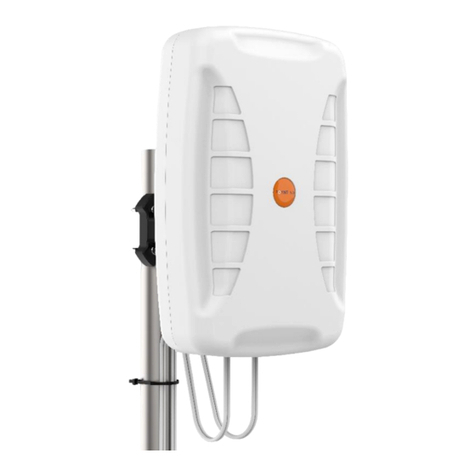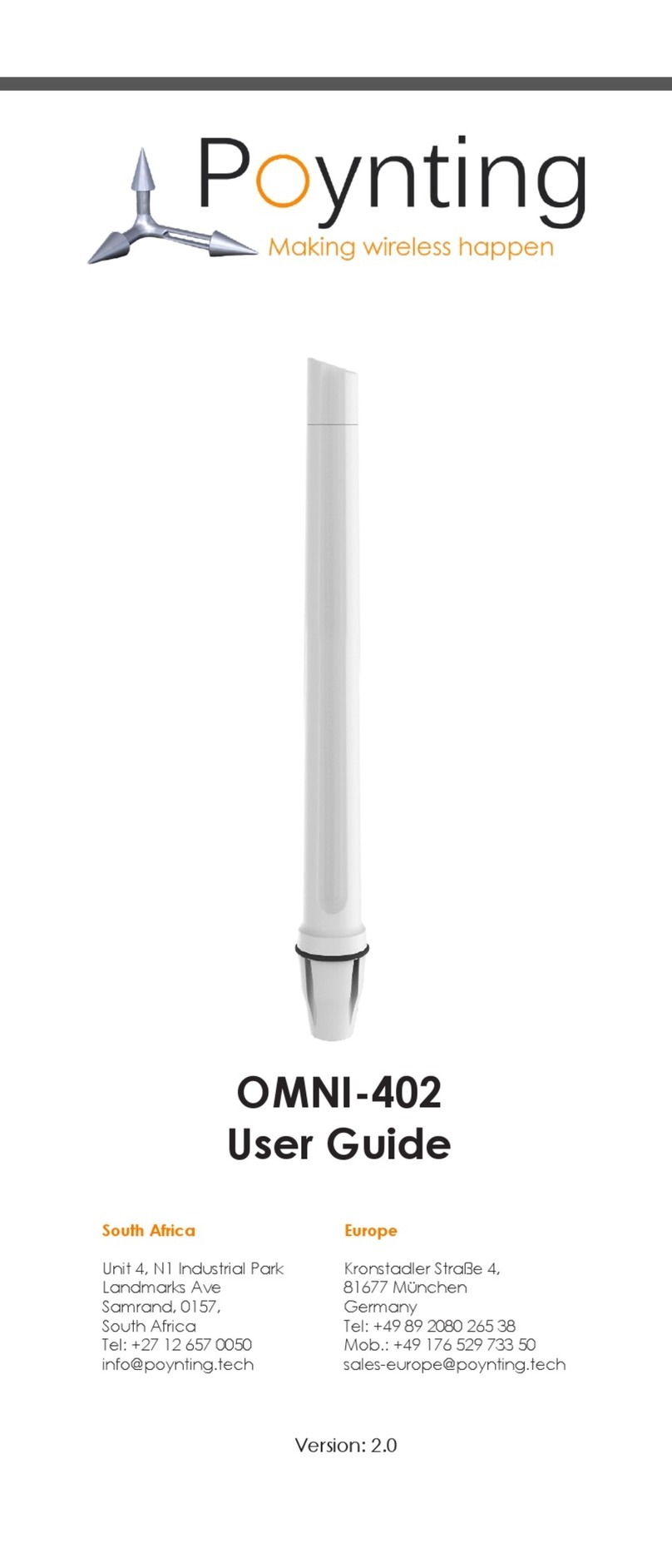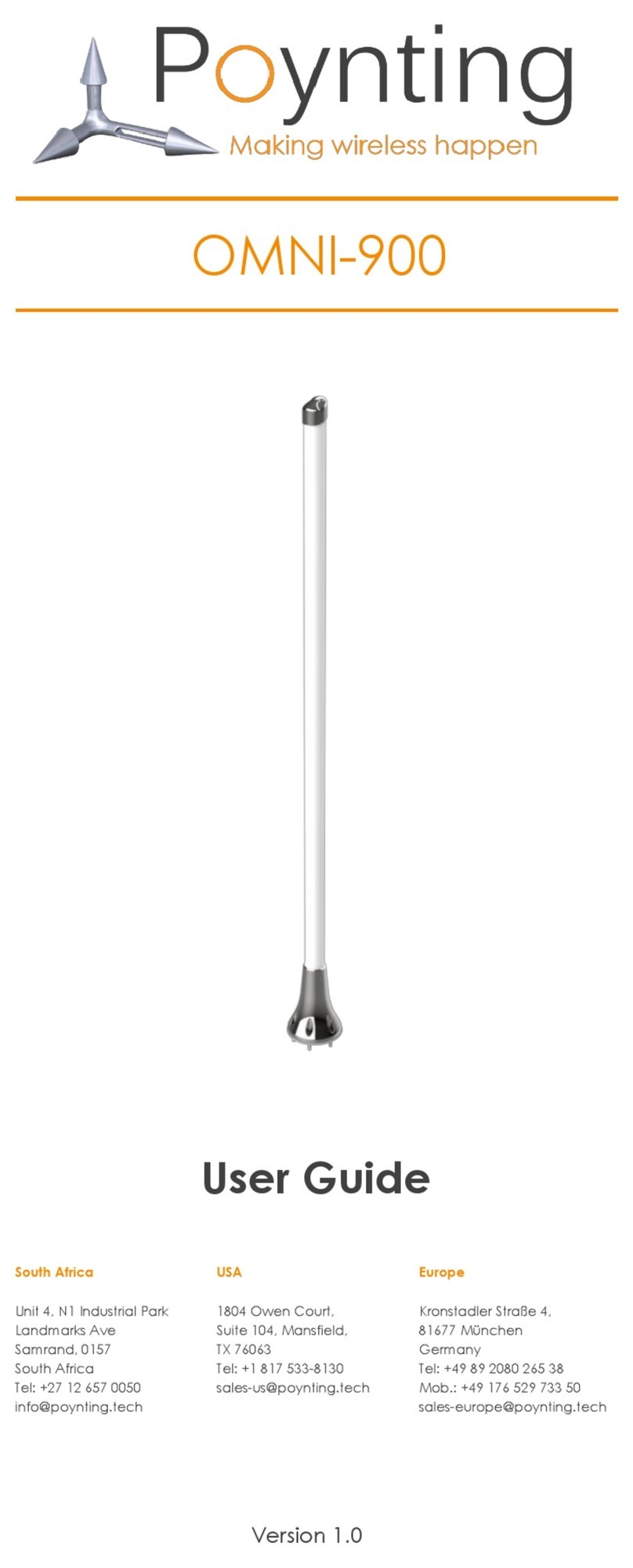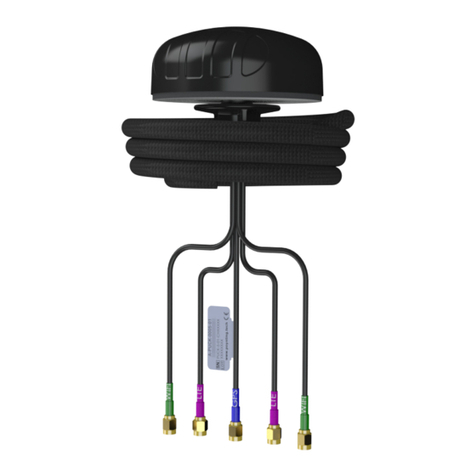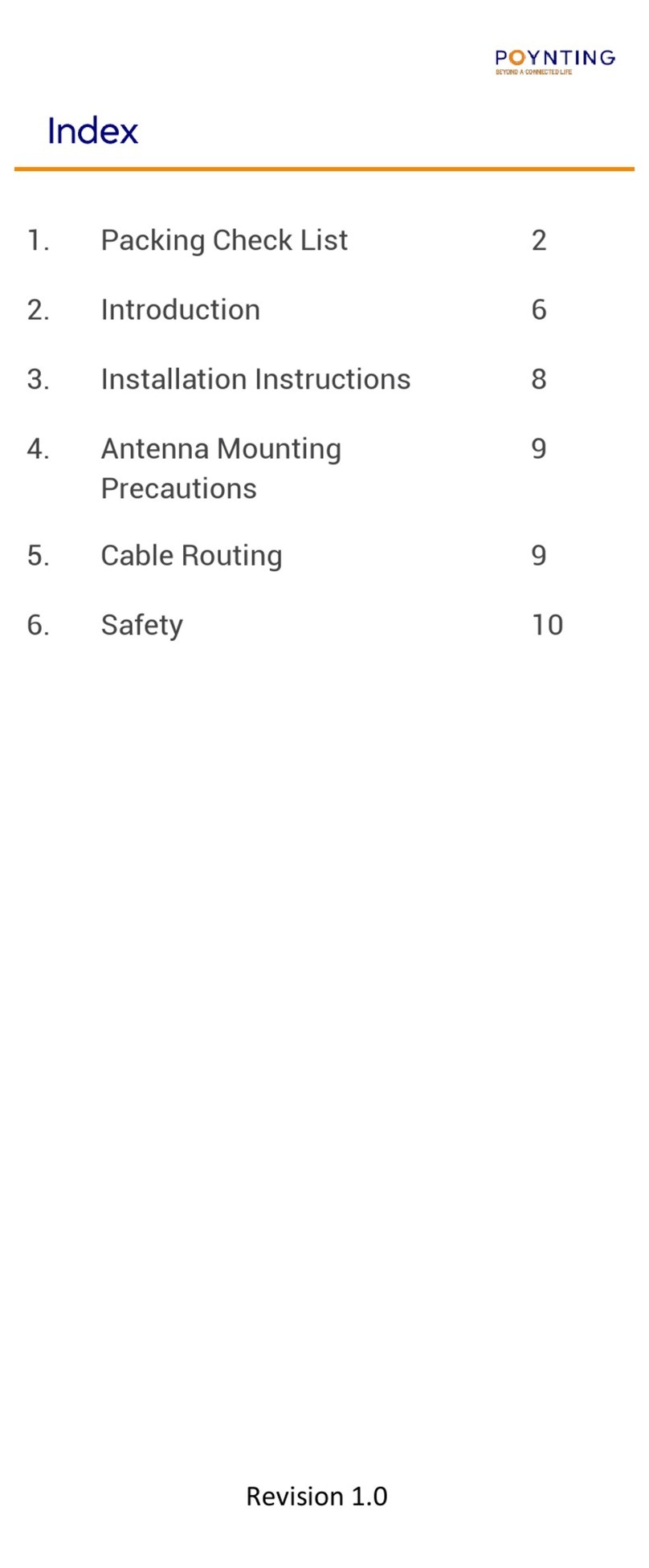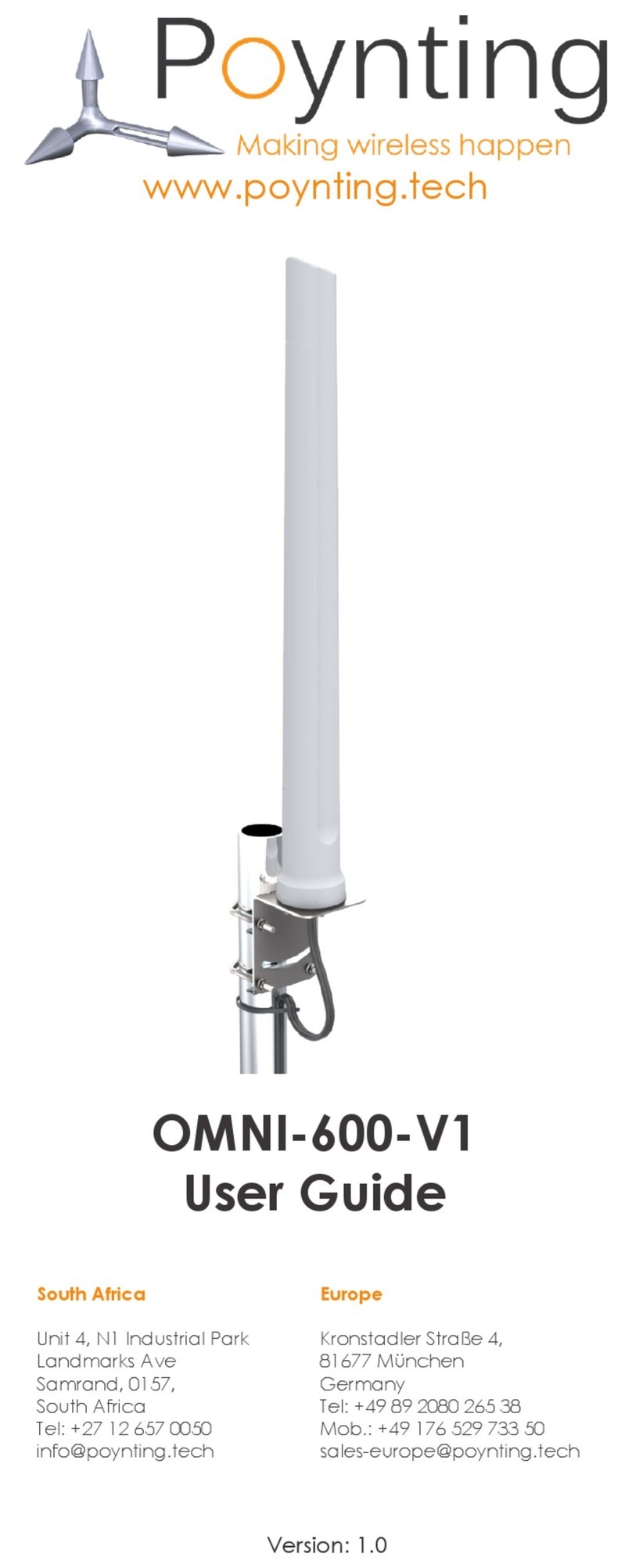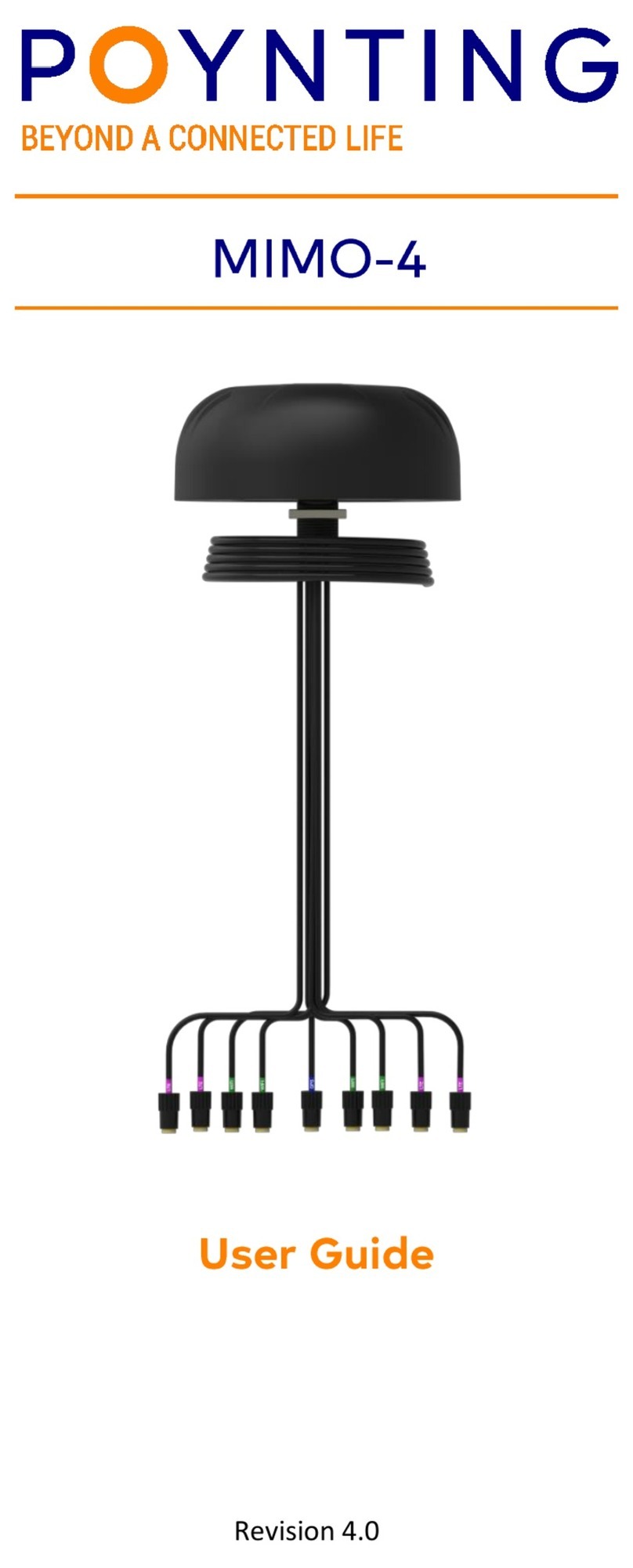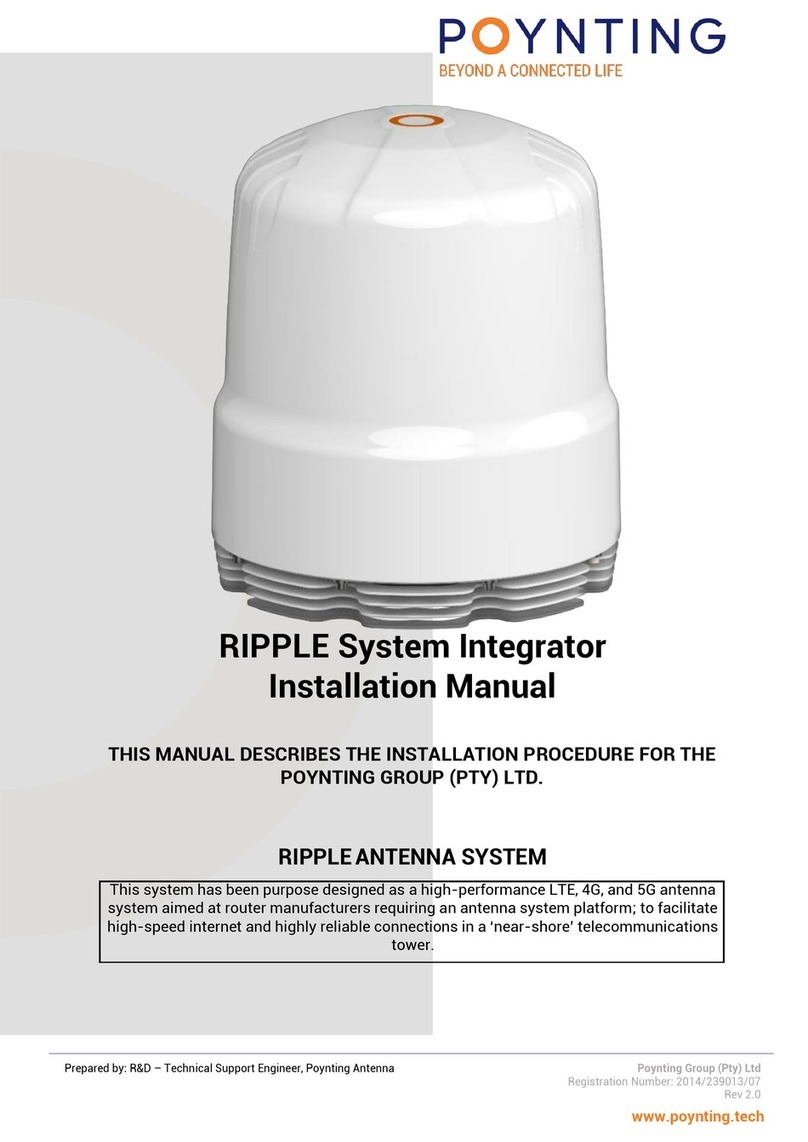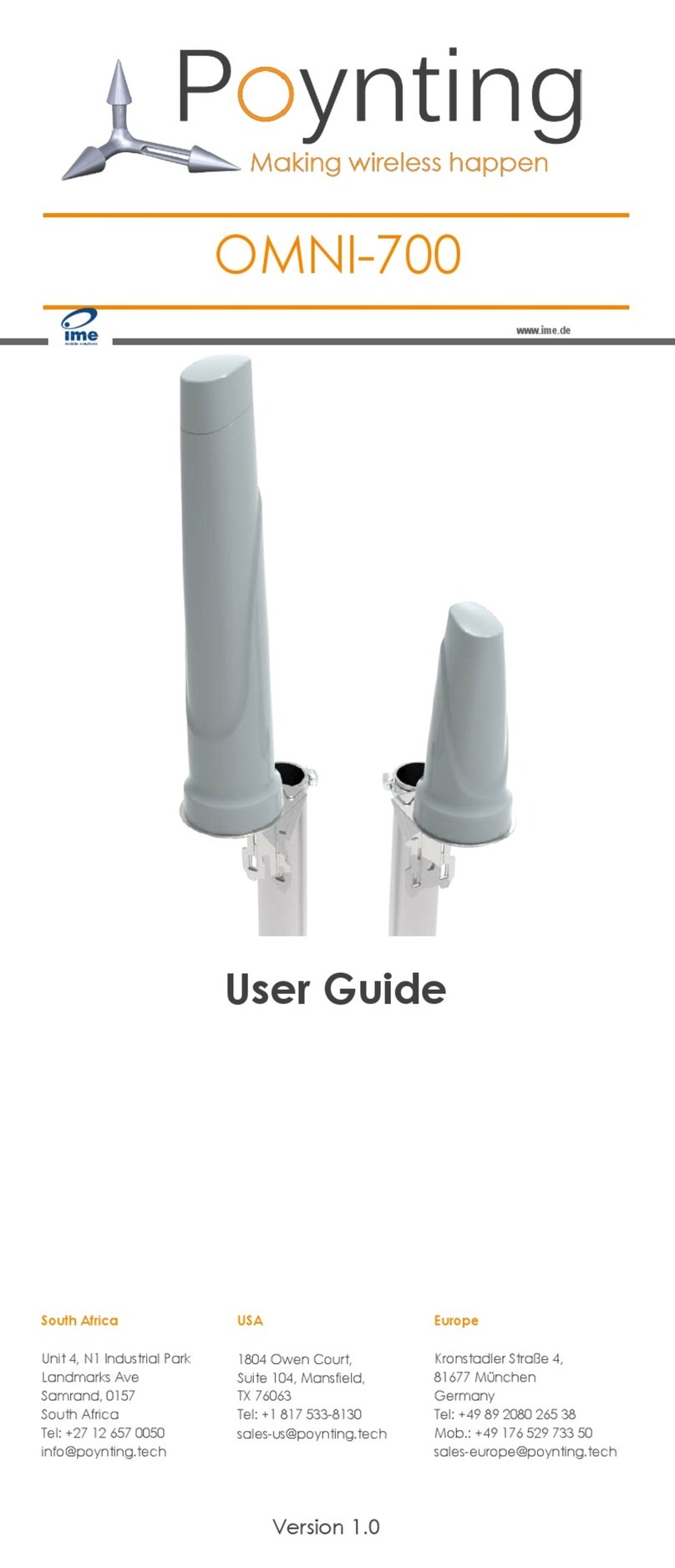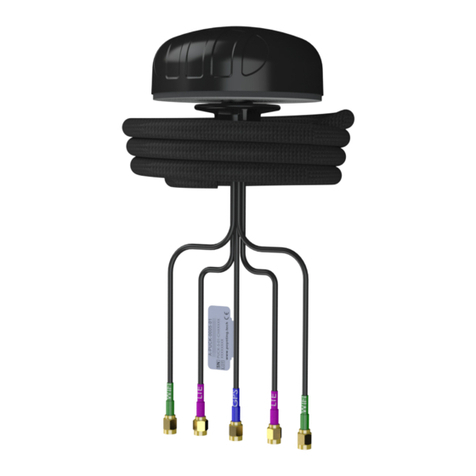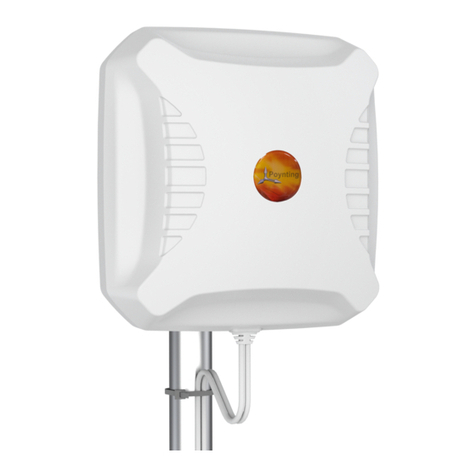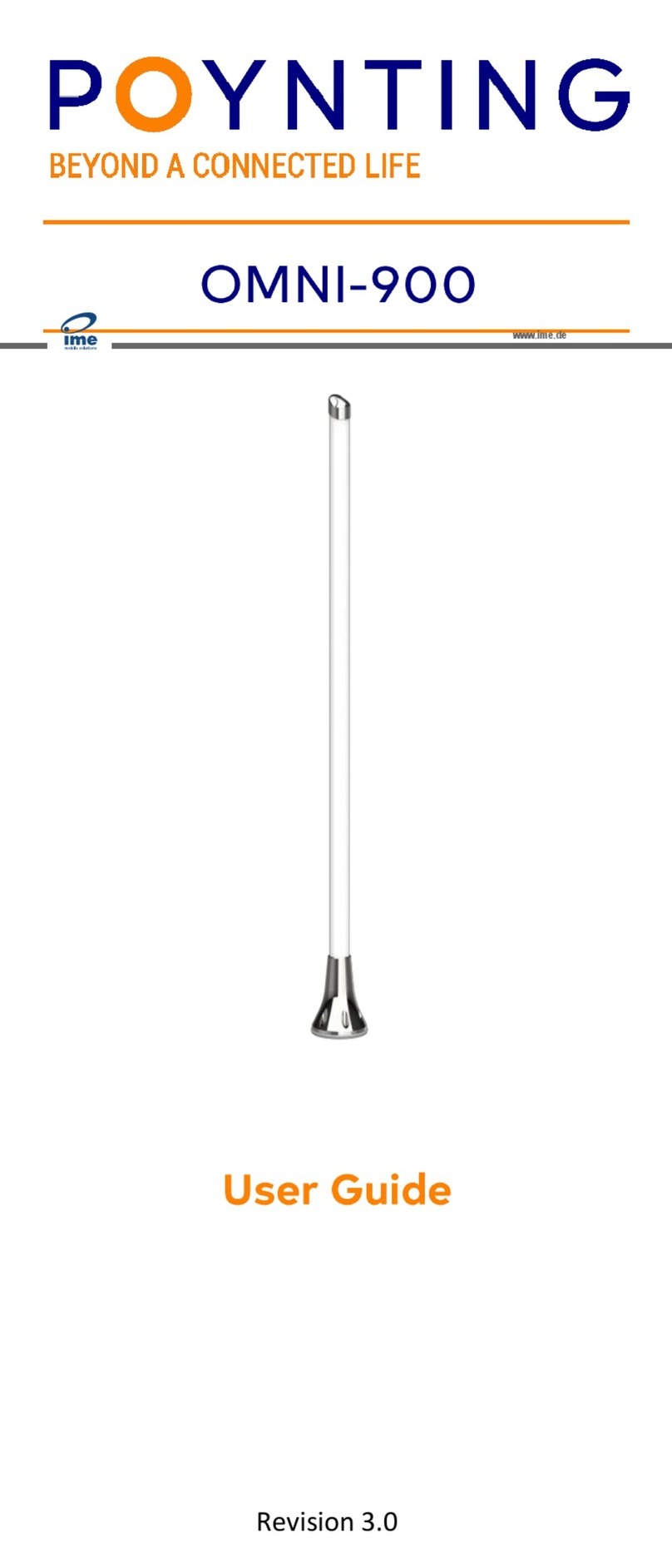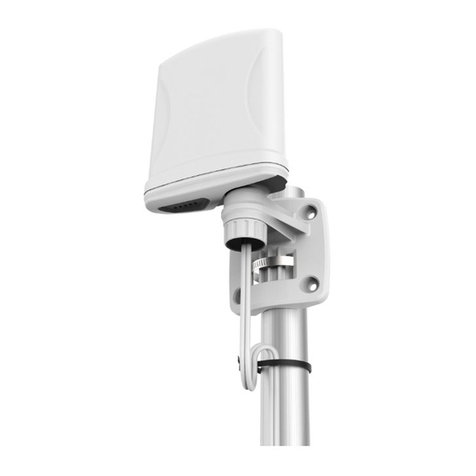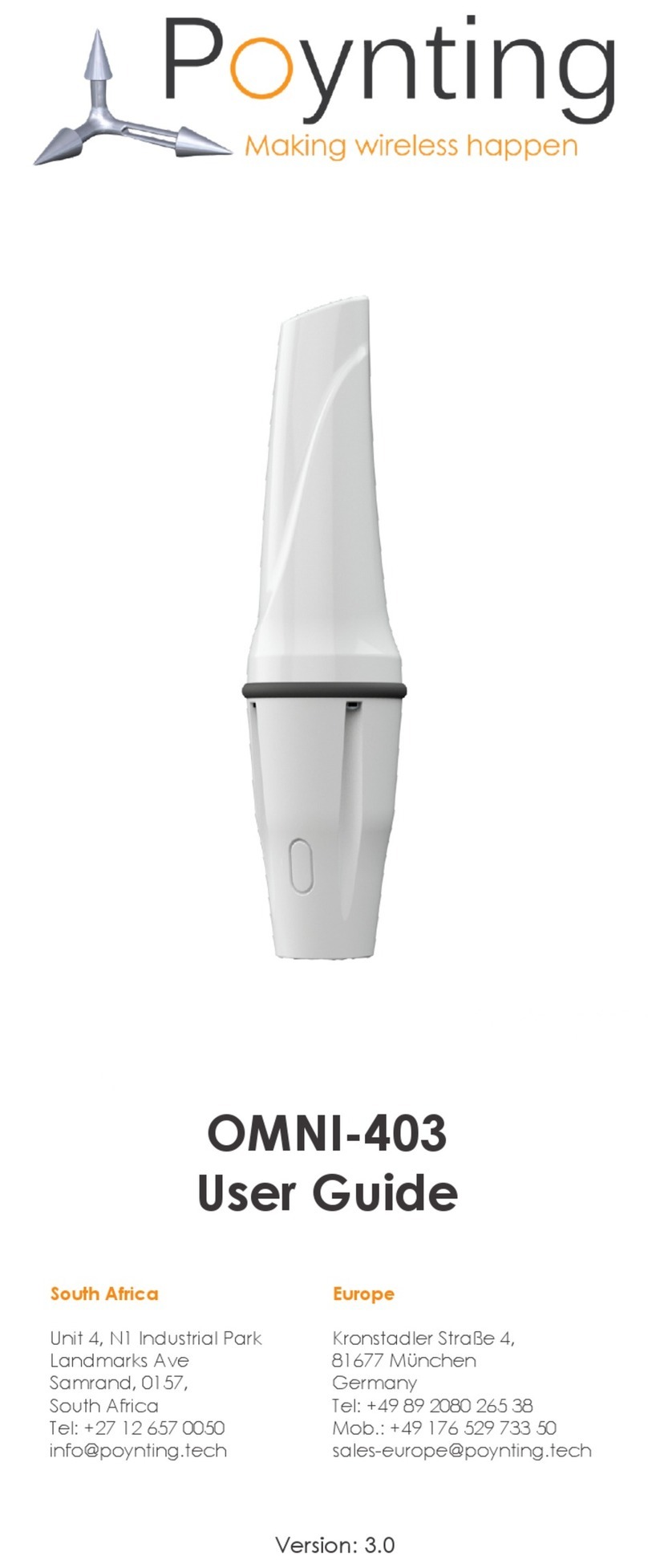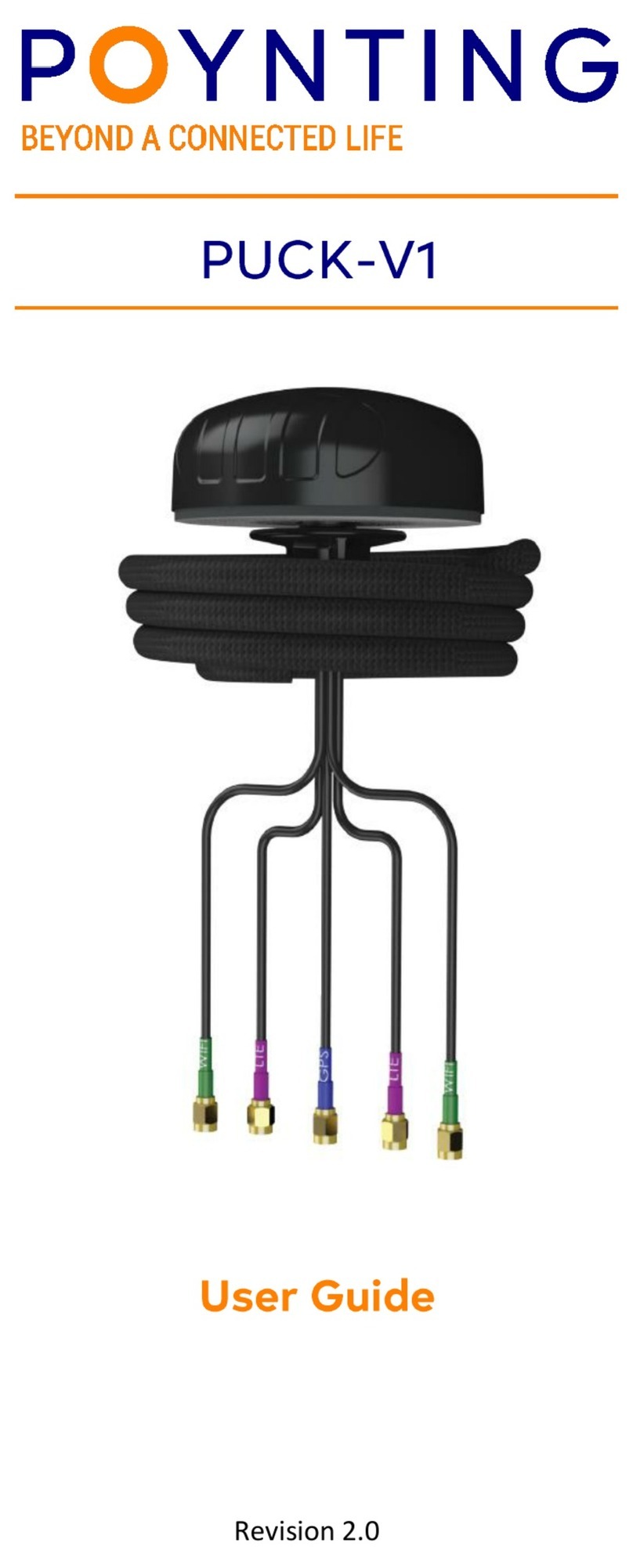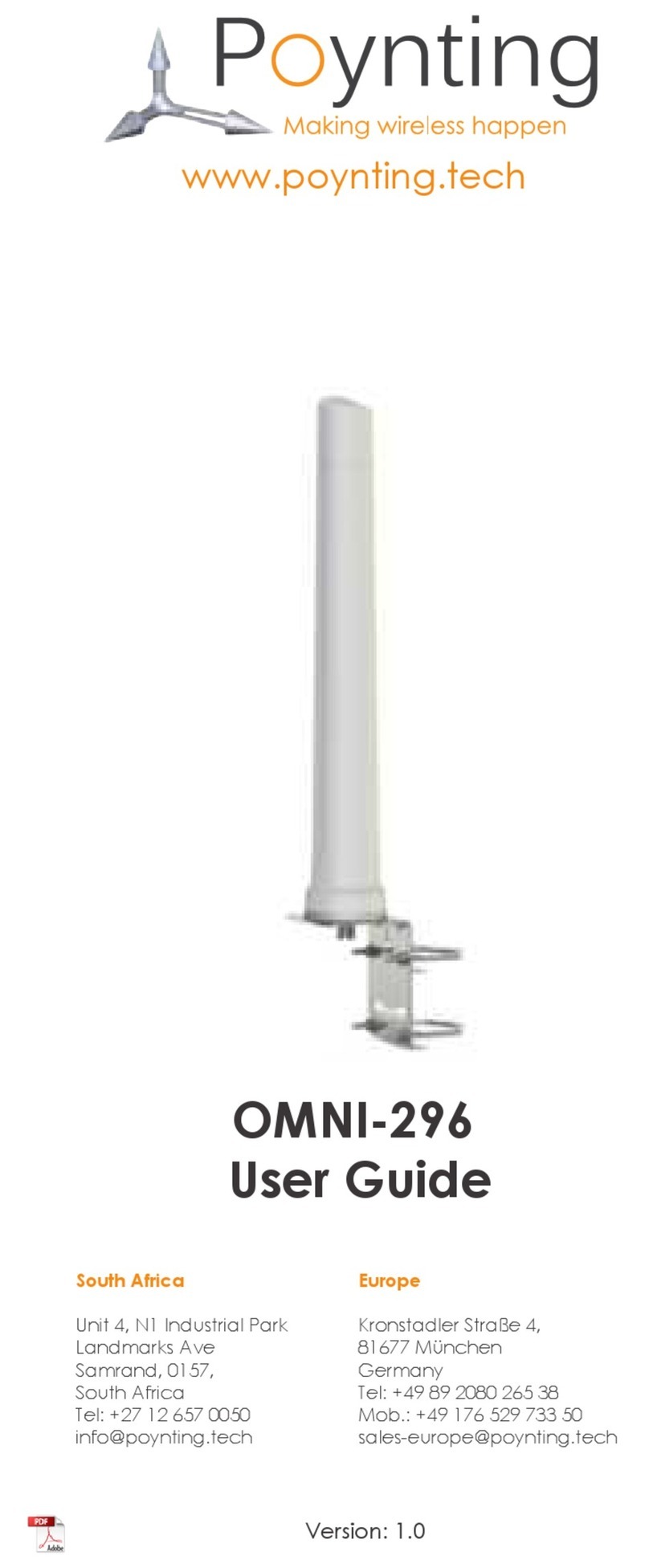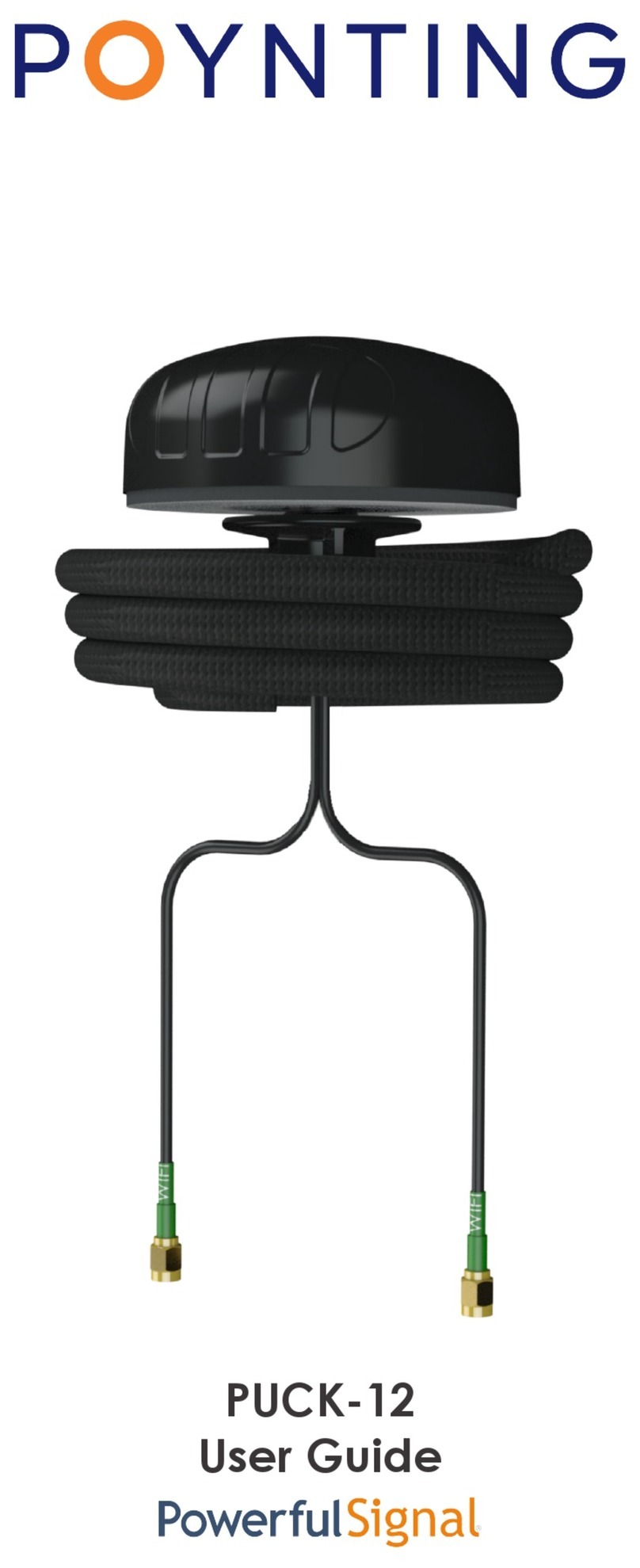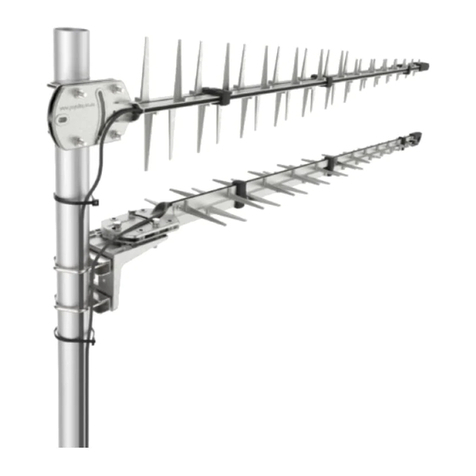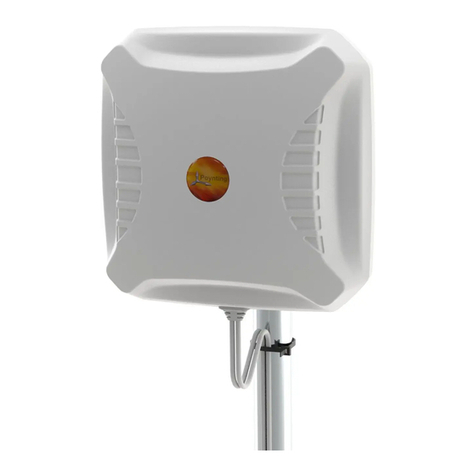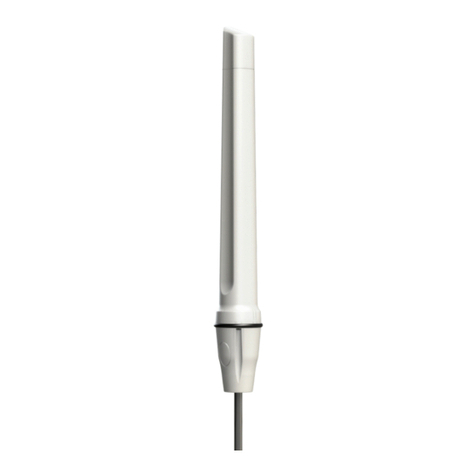
Page 5 of 31
www.poynting.tech
Poynting Group (Pty) Ltd
Registration Number: 2014/239013/07
CWSI – Certified WaveHunterTM System Integrator
1. Before the installation.
1.1. Selecting the Antenna Installation Site.
The WaveHunterTM consists of a cluster of Poynting Antenna’s patented, wide-band Uni-
Directional Antennas which together creates a 360º electromagnetic radiation pattern. A
‘Radiation Pattern’ defines an Antenna’s ability to efficiently transmit- or receive radio signals
within the three-dimensional area defined by this ‘Radiation Pattern’. (see ‘Radiation Patterns’ in
the Technical Documentation of the WaveHunterTM).
An ideal omnidirectional Antenna has, as close as possible, a 360º clear view towards the
horizon. This implies that the Antenna installation site must have as little as possible solid
obstacles in the line-of-sight of the Antenna System, 360º in the horizontal plane, towards the
horizon.
Any substantial structures in the path between the WaveHunterTM and the shore based towers it
is pointing to will cause degradation of the signal. The location of the WaveHunterTM should be
chosen to minimize blockage caused by the structures of the ship.
It is desirable to be mounted high enough to minimize the effects of the surrounding structures.
Large, solid, structures will cause significant signal loss while wire rope stays, lifelines, small
diameter handrails and other accessories may cause little to no noticeable loss.
1.1.1. Horizontal Radiation Pattern (or Azimuth) - The WaveHunterTM has an excellent Horizontal,
also known as ‘Azimuth’, radiation pattern that will ensure perfect reception from 360º around
the vessel provided the area ‘around’ the Antenna System is clear of obstacles.
1.1.2. Vertical Radiation Pattern (or Vertical Aperture) - Equal consideration should be given to the
vertical plane. The WaveHunterTM Antennas have an approximate 60º vertical aperture at the
lower frequencies; approximately 30º below the ‘horizon’ and 30º above the ‘horizon’. the
‘horizon’ being the 0º ‘line-of-sight’ of the Antenna pointing to the horizon. The ‘aperture’ of
the Antennas should be unobstructed as far as possible.
This ‘vertical aperture’ is important to counteract any ‘Pitch-and Roll’ of the vessel
that would result in loss of transmission- or reception of the signal.
1.1.3. Obstacles - Solid objects are objects such as Masts, Exhaust Funnels, other Antennas, and
such like, mainly metal structures, that can potentially attenuate the Radio Signal being
transmitted from- or received by the WaveHunterTM.
1.1.4. Close proximity to RADAR - Do not install the Antenna near the ship’s RADAR, especially on
the same horizontal plane. The electromagnetic pulsed energy from the RADAR may
significantly adversely affect the Signal-to-Noise (SNR) of the internal Routers’ receivers
installed in the WaveHunterTM.
It is recommended to position the Antenna at least 4 feet (1.2 m) above or below the level of
the RADAR Antenna and minimum of 15 feet (4.6 m) away from the high power short wave
radars.
The S-Band RADAR, in particular, operates at frequencies between 2,9 – 3,1 GHz and, since
the WaveHunterTM is designed to be a wide bandwidth Antenna, to be able to receive signals
in the frequency bands 617 MHz – 4 200 MHz, SNR protection for the above S-Band
frequencies can only be offered by the filters in the Router’s transceiver. It is therefore
